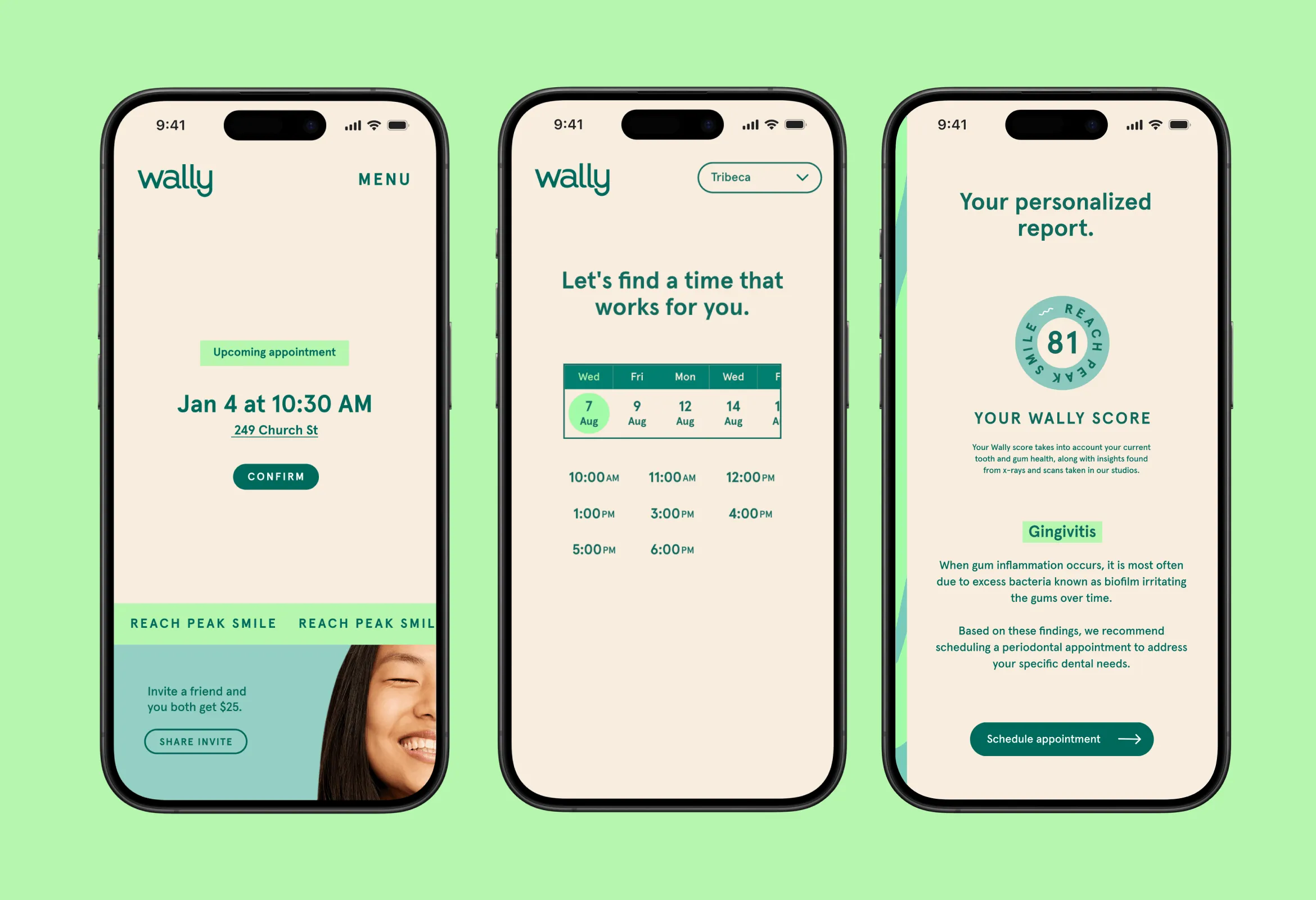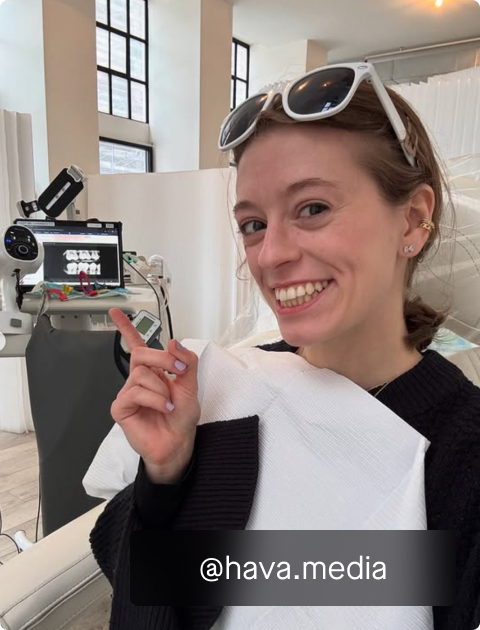High fluoride toothpaste & other fluoride treatments

Your enamel is super strong, in fact it's tougher than steel. But even steel armor can be breached, and the same goes for your teeth if your enamel gets too weak.
After you eat, small pieces of food linger in your mouth. Your saliva breaks down those morsels into carbohydrates and sugars, which bacteria gobble up and poop out as acids. Those acidic bacteria turds sit on your enamel and eat away at the minerals in your teeth. If you don't see the dentist frequently enough and your at-home hygiene routine isn't optimized, this can lead to tooth decay. That means sensitivity, cavities, or cracked teeth.
The good news is if you see your dentist regularly, your clinical team can catch this early and recommend one or a combination of fluoride treatments designed to strengthen your enamel and prevent tooth decay. Your clinicians might recommend one or more of the following:
- High fluoride toothpaste with a prescription
- Fluoride treatment at home
- Topical fluoride treatment at your dentist
High fluoride toothpaste with a prescription
If you left your dentist office holding a prescription in hand, you might be wondering, "why would toothpaste need a prescription?" Then you might wonder, "what is this prescription going to do for me?" Well wonder no more.
Your dentist just wrote you a prescription for "high fluoride toothpaste," or toothpaste with a higher concentration of fluoride than toothpaste you can get off the shelf (or off the Amazon).
Regular toothpaste can have up to 1450 parts per million (ppm) fluoride. Wait, is that a lot?
-- WARNING -- there is about to be some math.
Parts per million SOUNDS like a lot, or maybe a little? ¯\_(ツ)_/¯
A helpful way to visualize one (1) part per million is to think of dropping four (4) drops of ink in a 55-gallon barrel full of water. So 1450 ppm would be like dropping 5,800 drops, or 1 ⅓ cups of ink into that same 55-gallon barrel ... That was a lot of math.
High fluoride toothpaste usually has 3x the regular amount of toothpaste, coming in at 5000 ppm (or 4 cups of ink in that barrel) to amplify your exposure to fluoride. The extra fluoride helps remineralize your teeth more effectively so you can restore enamel that was eaten away by acids from bacteria in your mouth.So when and how should you use your prescription gel?
- Swap out your regular toothpaste for your prescription toothpaste
- Brush once in the morning after breakfast
- Brush once in the evening after dinner / before bed
- Avoid rinsing your mouth out with water after brushing - this allows your enamel to absorb the minerals from the toothpaste
If you got a prescription for a high fluoride toothpaste you should take it seriously. Your dental team saw that you are at high risk for tooth decay and this toothpaste script can help you stop and potentially reverse early signs of tooth decay.
"Sticking with your routine and swapping in a high-fluoride toothpaste can do wonders for your enamel," shares Wally hygienist, Sarah Clark RDH. "I've seen patients dramatically change their risk for tooth decay after just a few months of consistently using prescription toothpaste.
Fluoride treatment at home: a beginner's guide
There's also the good old fluoride treatment. Rather than a toothpaste, your dentist might have written you a prescription for at-home fluoride treatment.
This might come with a brush that you apply directly to specific surfaces of your teeth, or you might receive custom-fit trays that you will add gel to before wearing on your teeth for a set period of time.
This approach is recommended for patients who are very high risk. If you're undergoing head and neck radiation treatment, have severe xerostomia (dry mouth), or have fragile enamel, your clinical team might discuss this approach with you.
Your fluoride treatment tools should come with instructions. Make sure you read them carefully and follow them to maximize the benefits of your products. Given how expensive they are, you will want to make sure you get as much out of them as you possibly can.
Topical fluoride treatments at your dentist
Your dentist may recommend giving you a "topical fluoride" treatment. Topical, alas, is "tropical" 🏝️ misspelled. In real speak it means "putting fluoride directly on the surface of your teeth." Topical fluoride treatments are fast and easy. It only takes a few minutes and doesn't require any medication or anesthesia.
Once your topical fluoride treatment is done, all you need to do is:
- Avoid consuming anything hot like soup or coffee for two hours
- Avoid eating hard & crunchy for two hours
- Wait to drink alcohol 6+ hours
- Don't brush your teeth for 6 or more hours
Pro tip: if your appointment is in the afternoon, you might get a free pass from your permission to NOT brush your teeth until the next morning. But only just this once 😉
Fluoride treatments: avoid them in the future
If your dentist recommended fluoride treatments, the goal is to remineralize your enamel and get you to the place where you can maintain your oral health with your at-home hygiene routine and regular dentist visits. If you're looking for a dental experience that helps you move away from expensive fluoride treatments while helping you reach peak health, join our waitlist for Wally's membership. It includes unlimited cleanings, personalized at-home hygiene routines, and a whole lot more you're gonna love.









